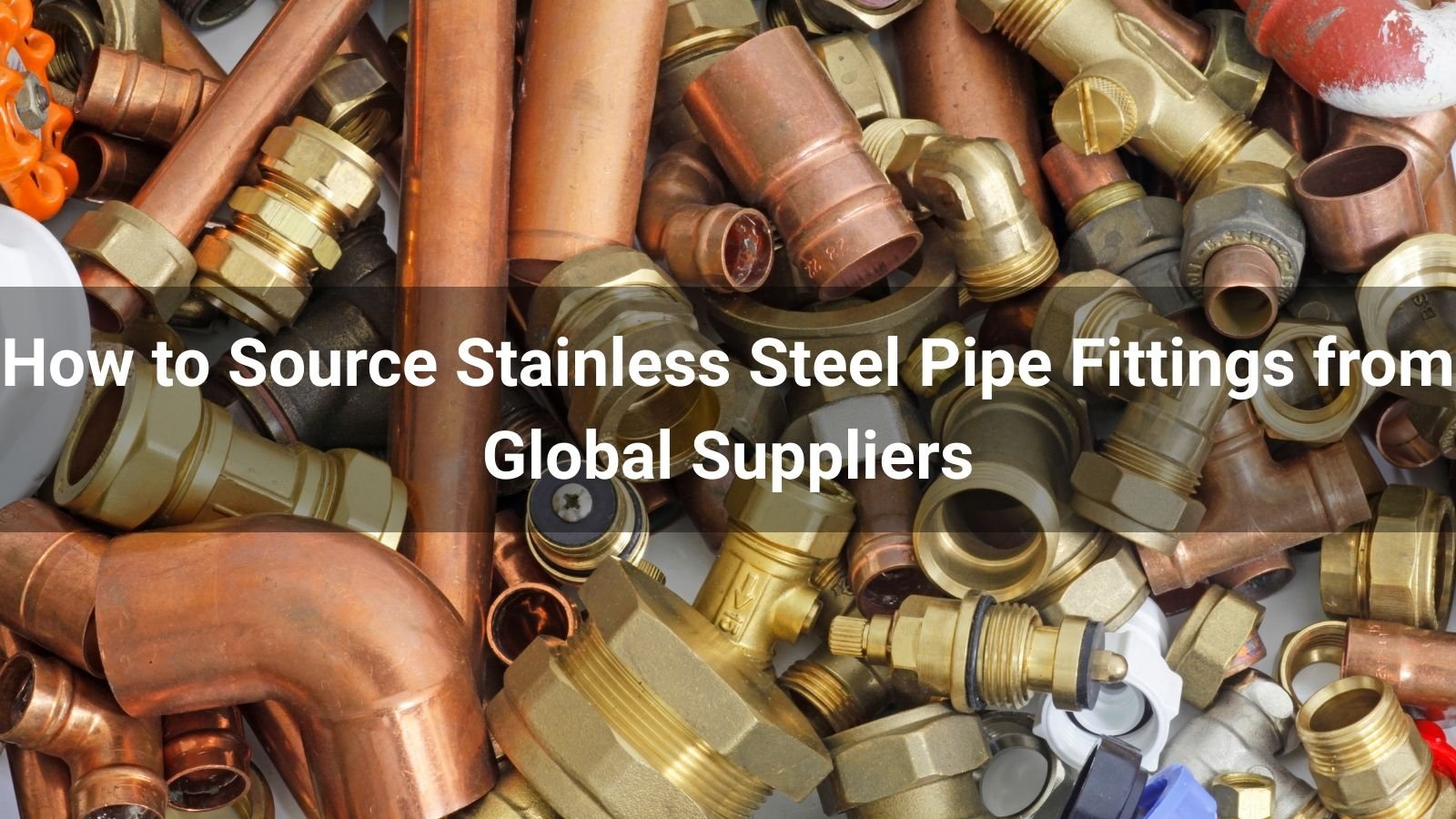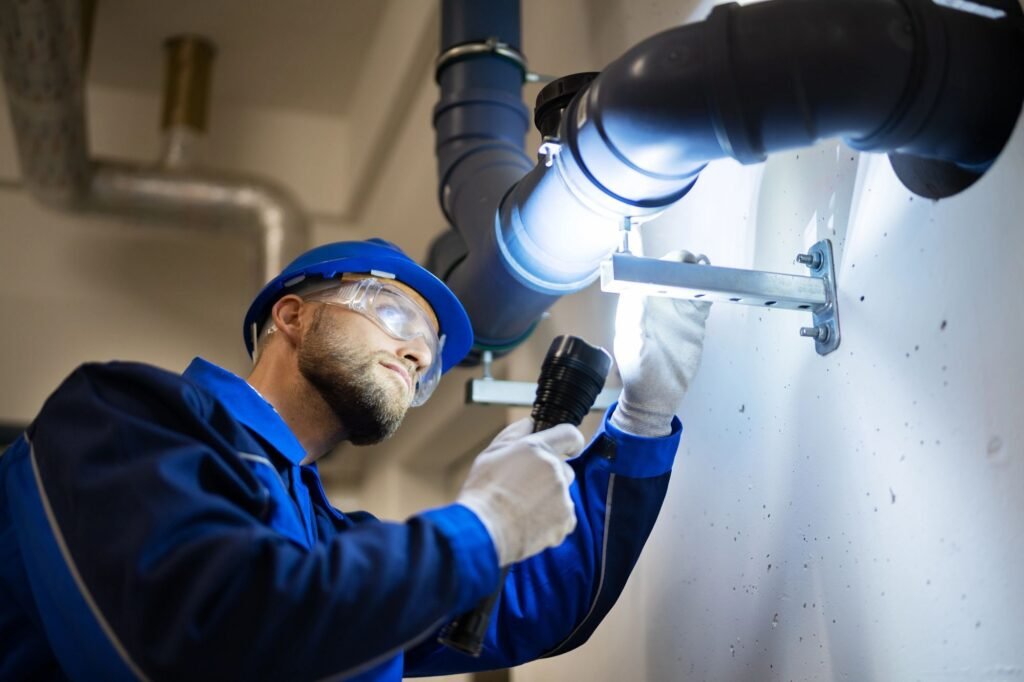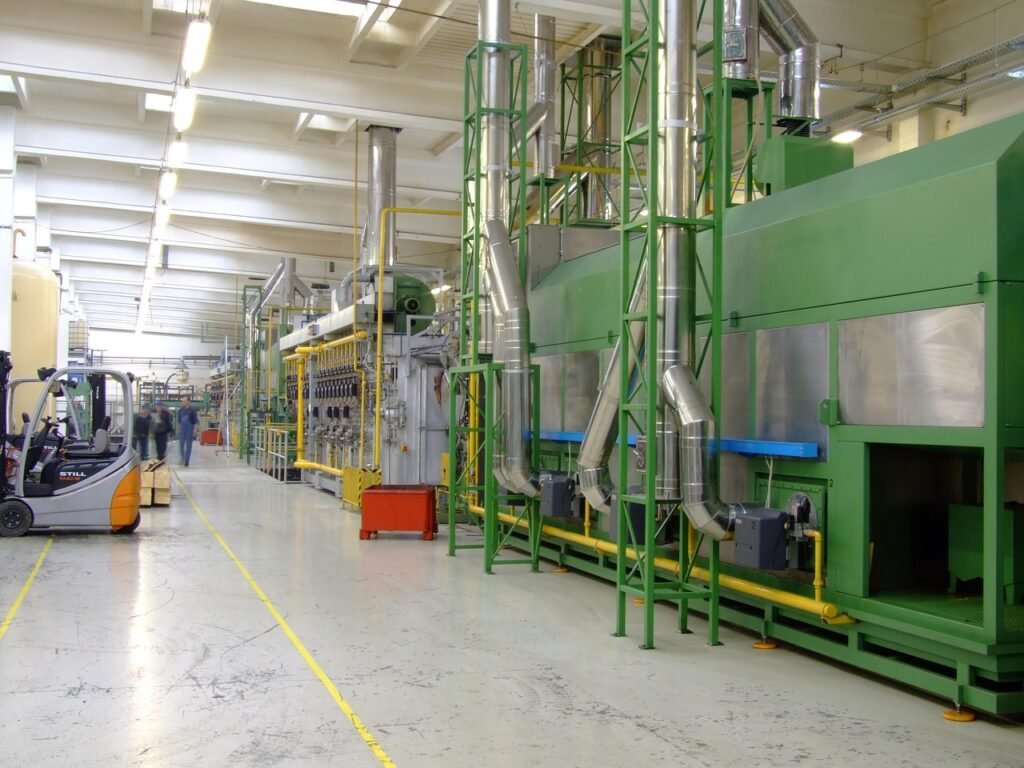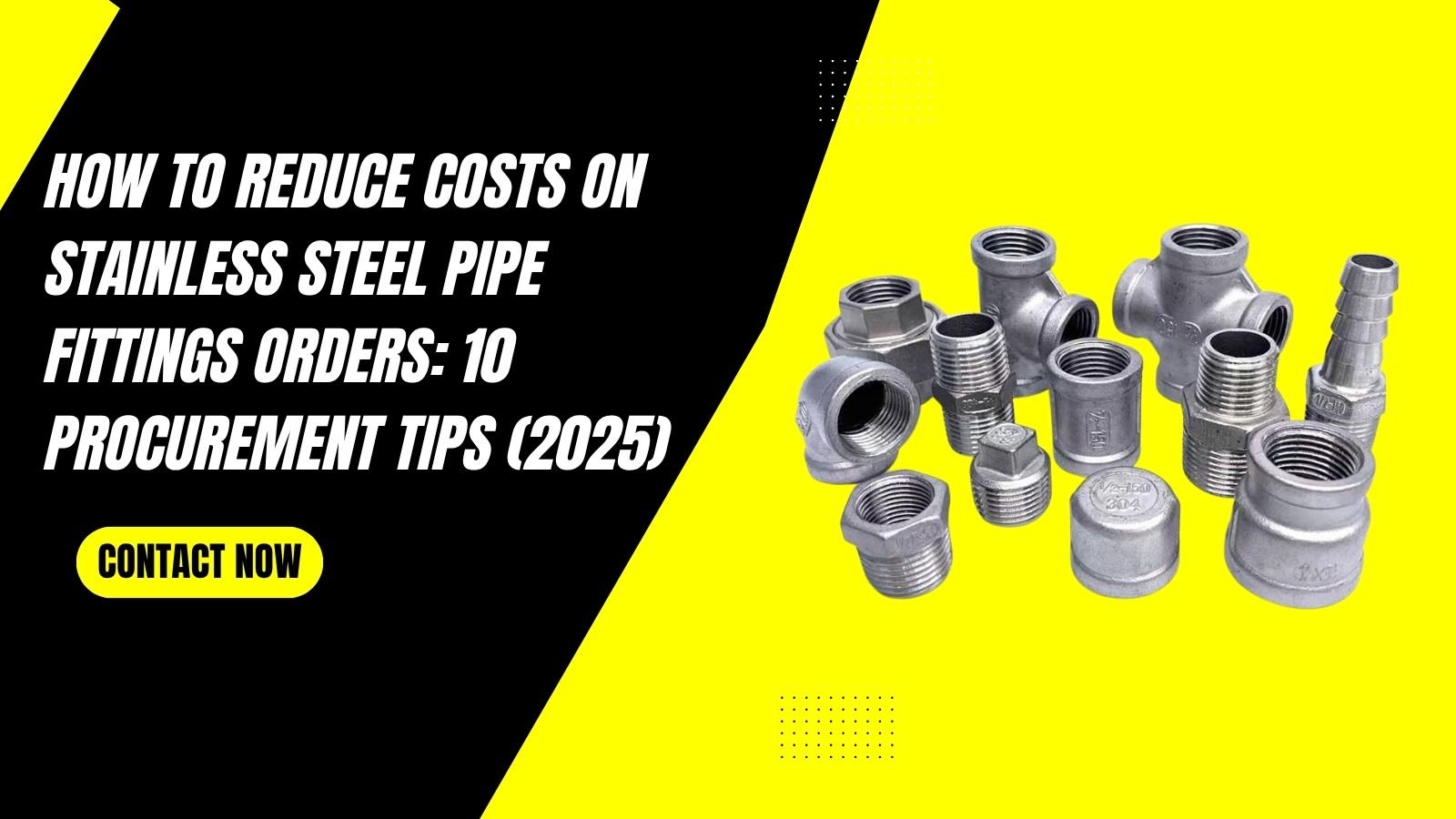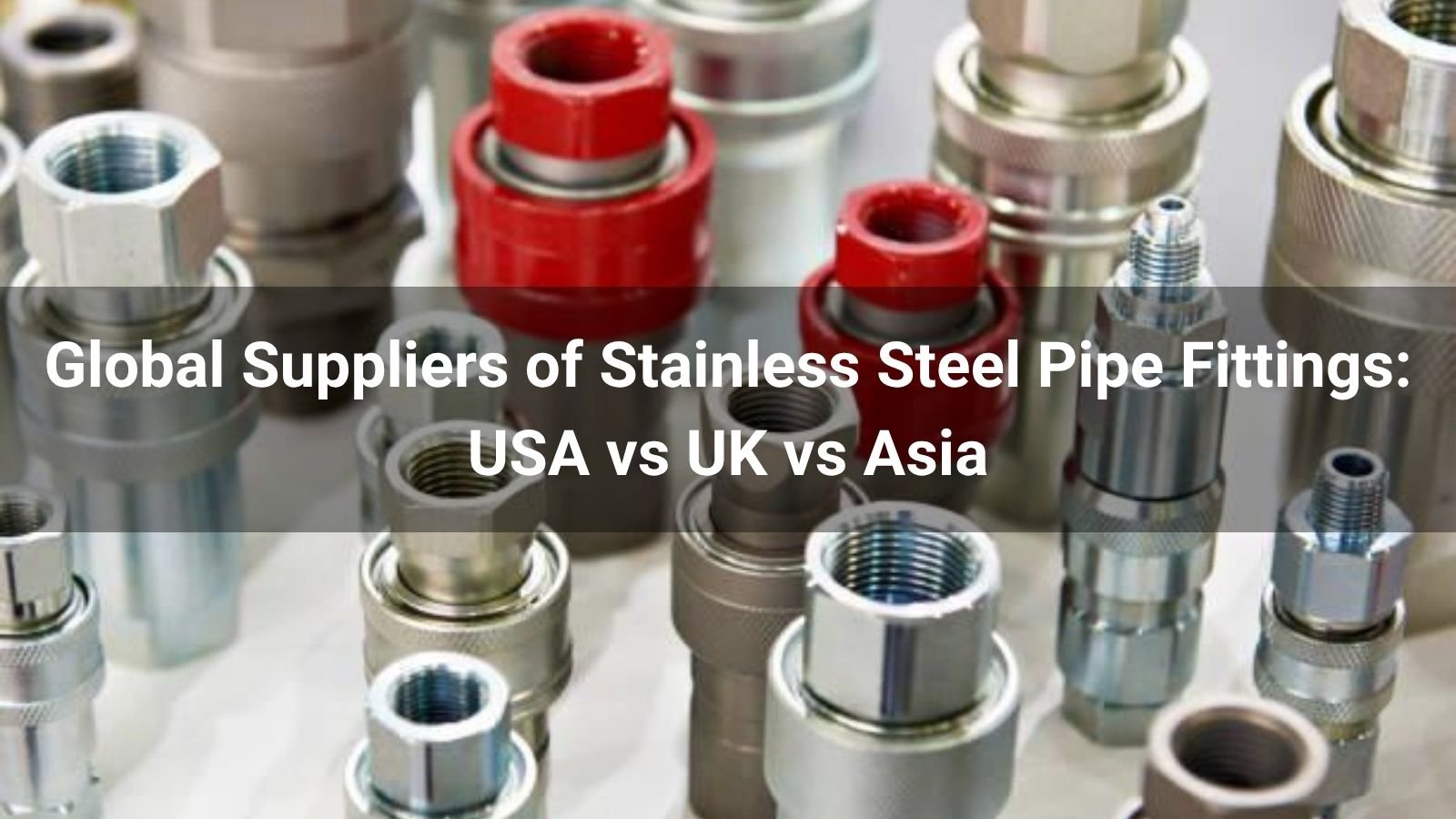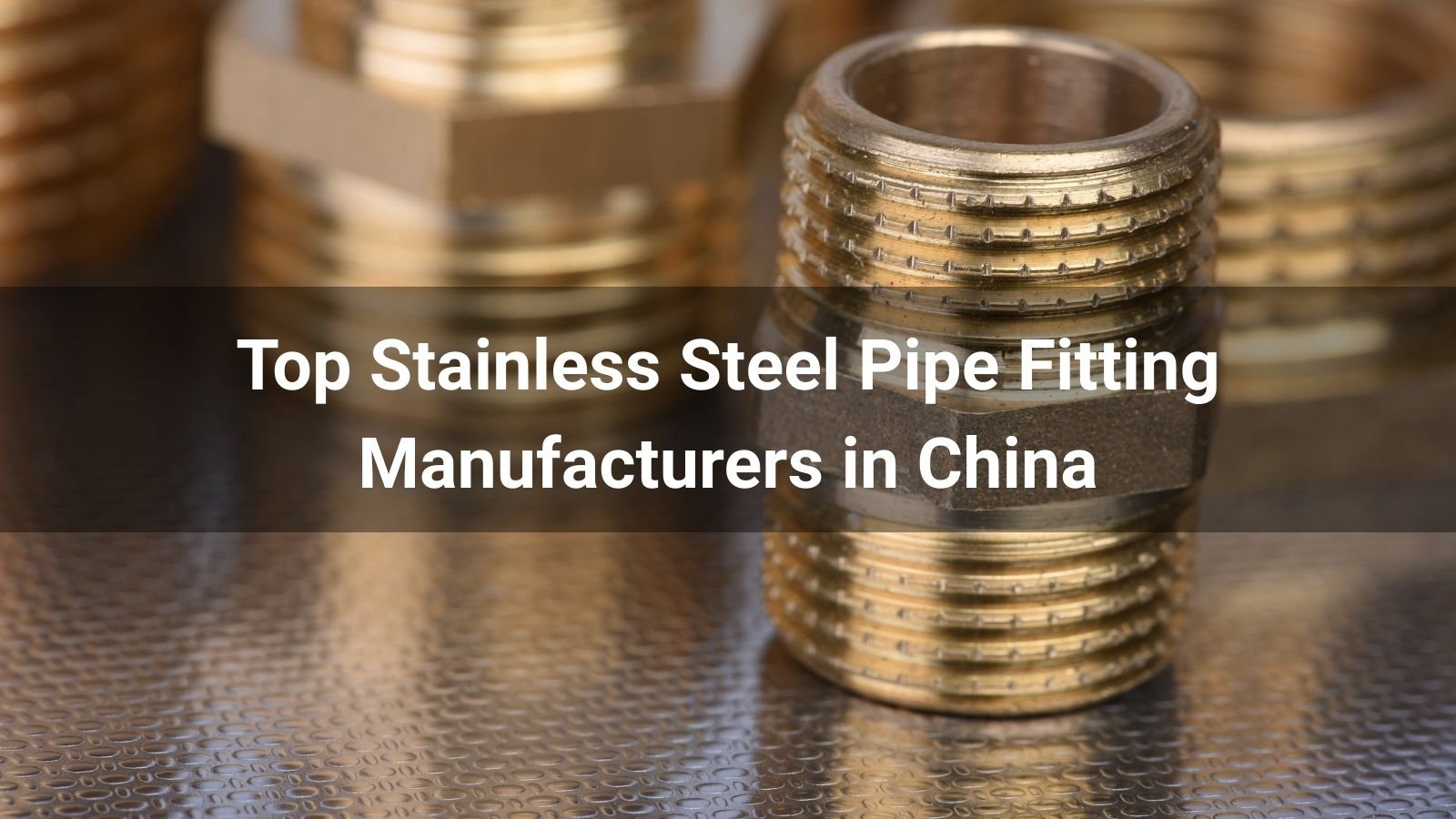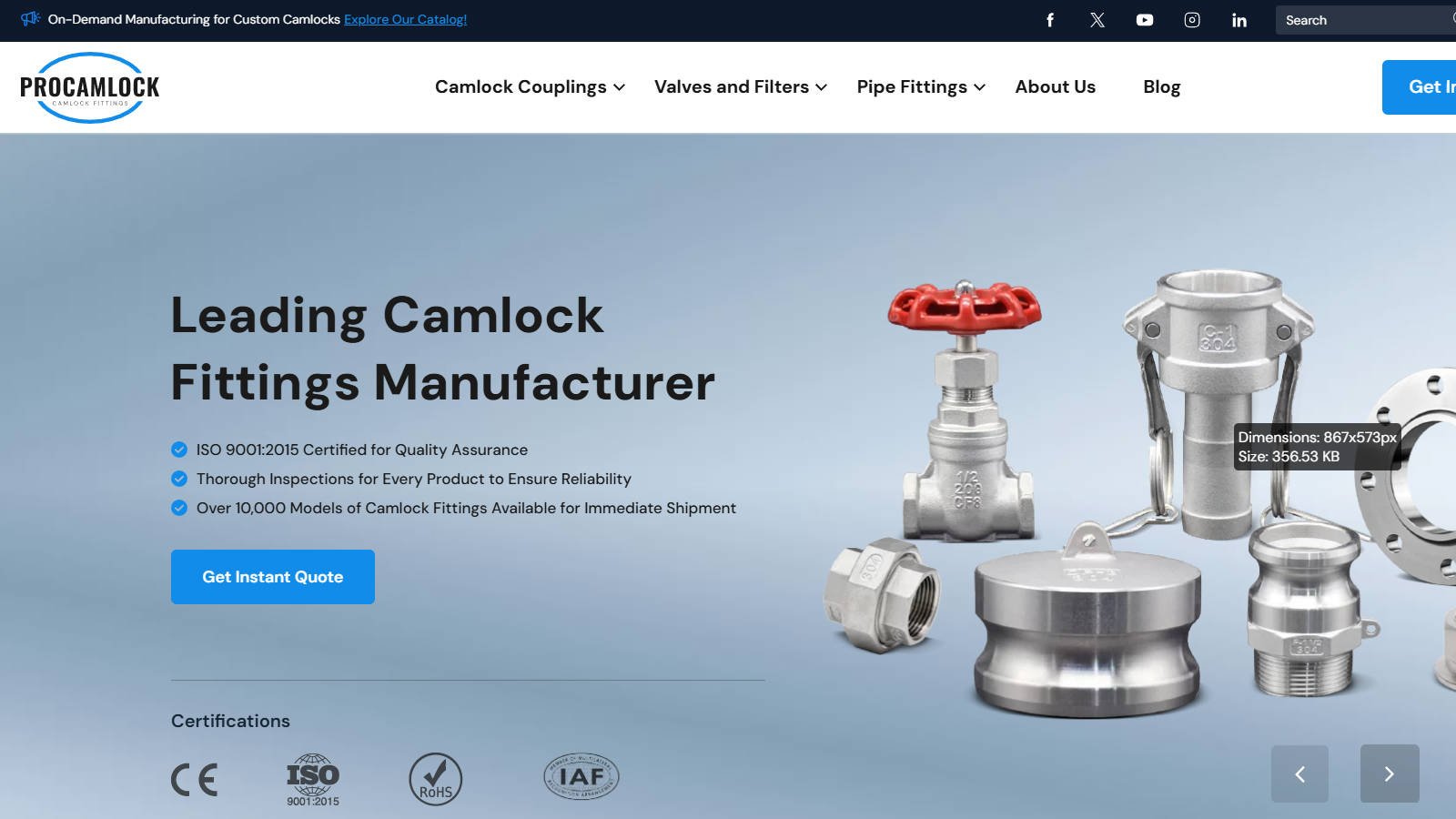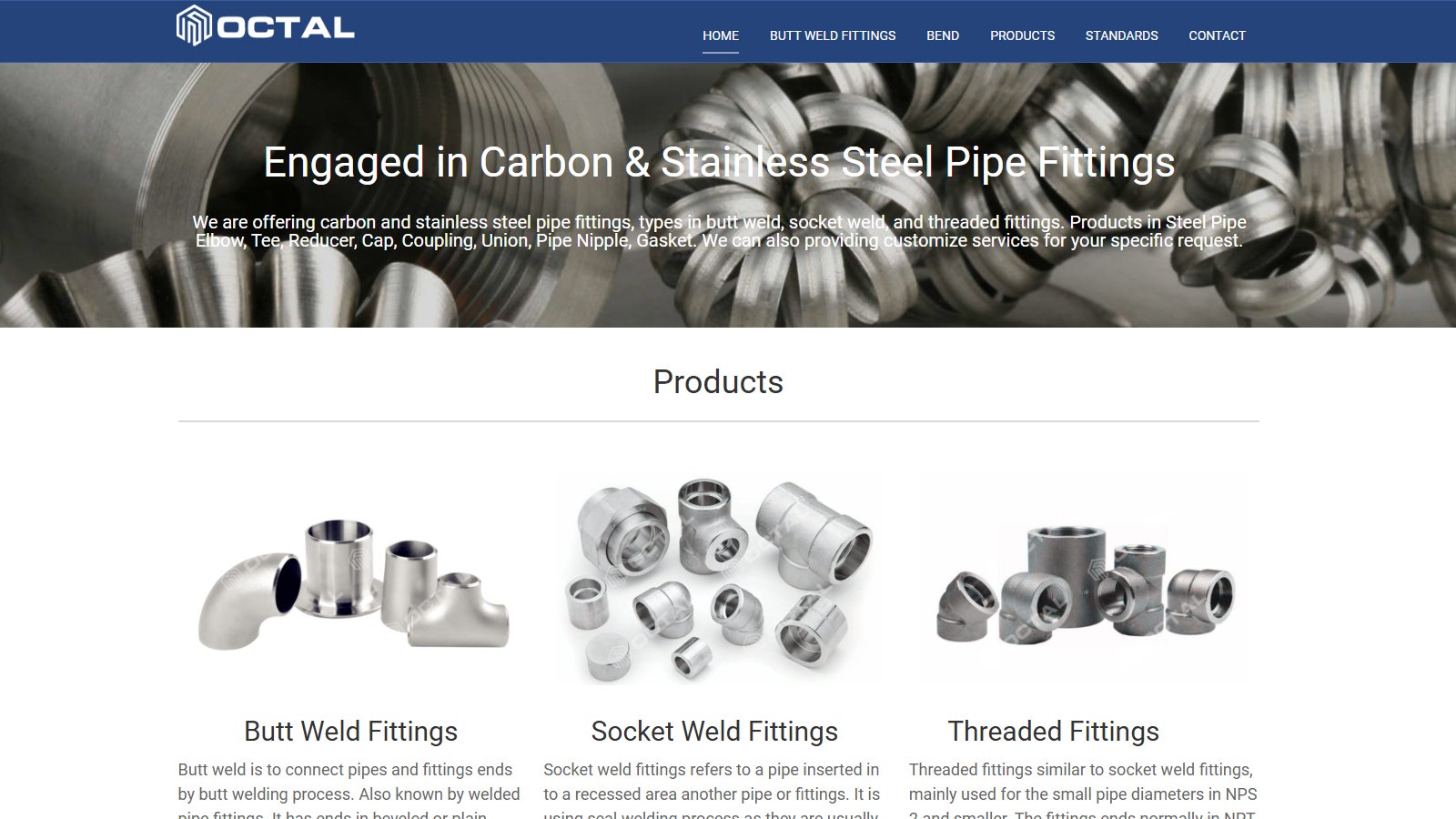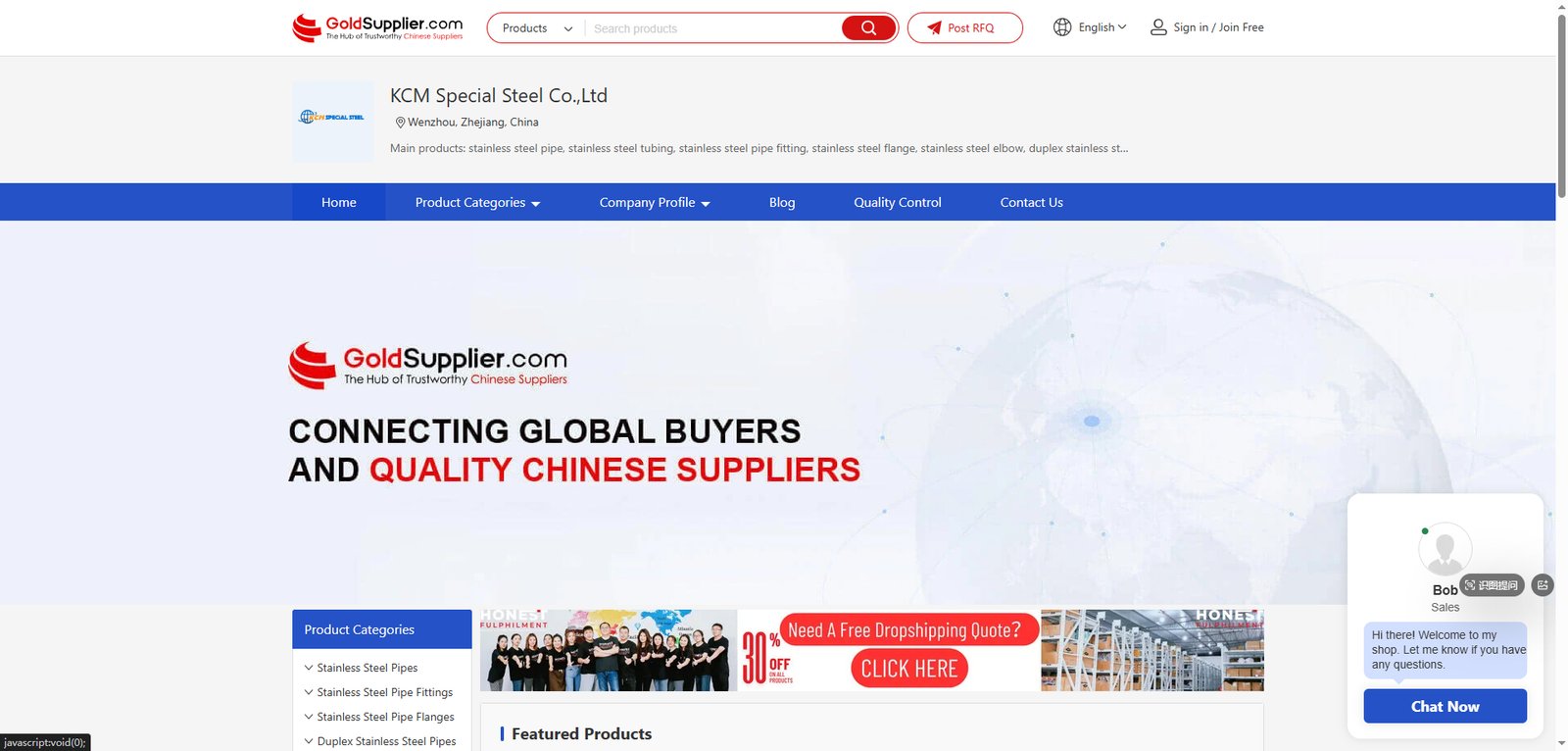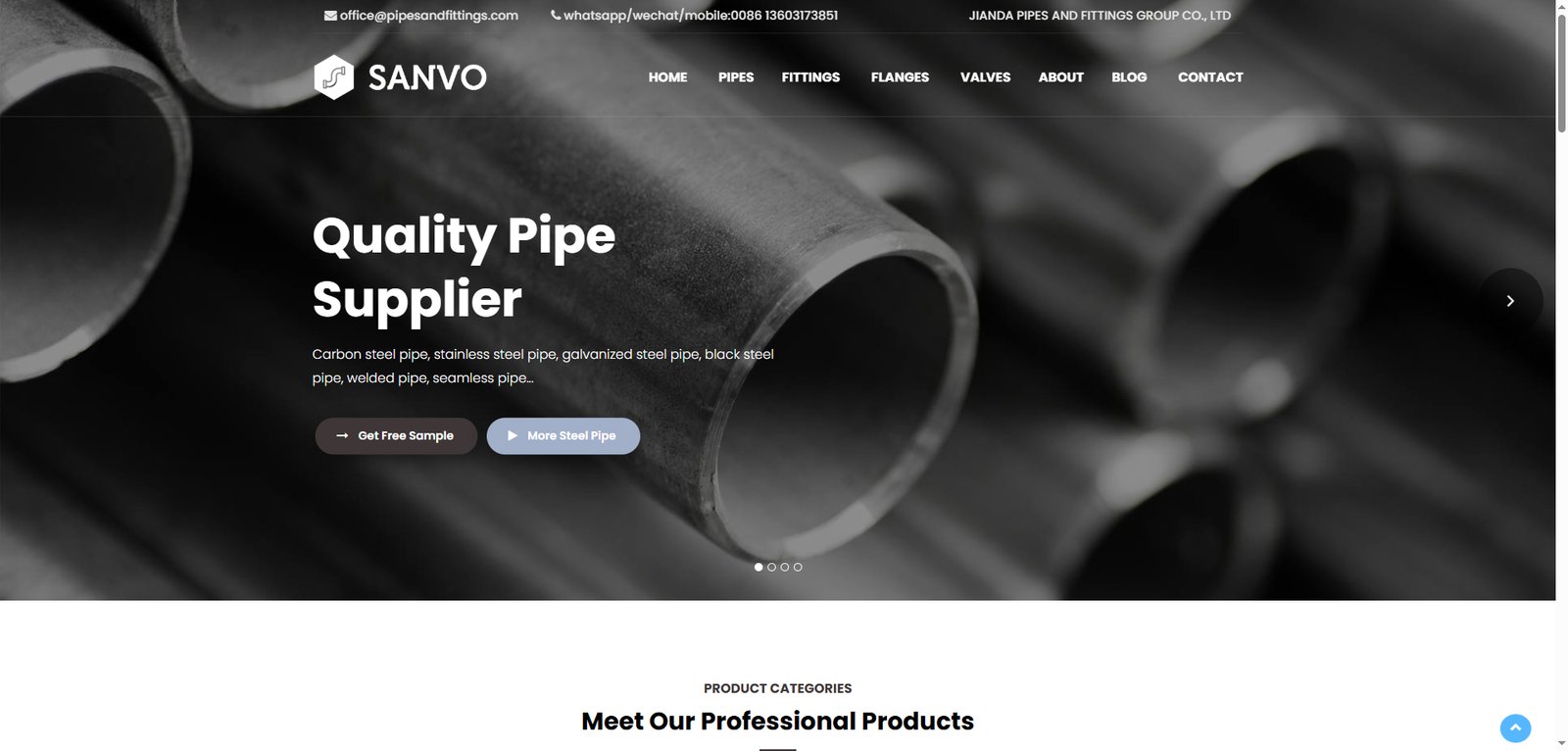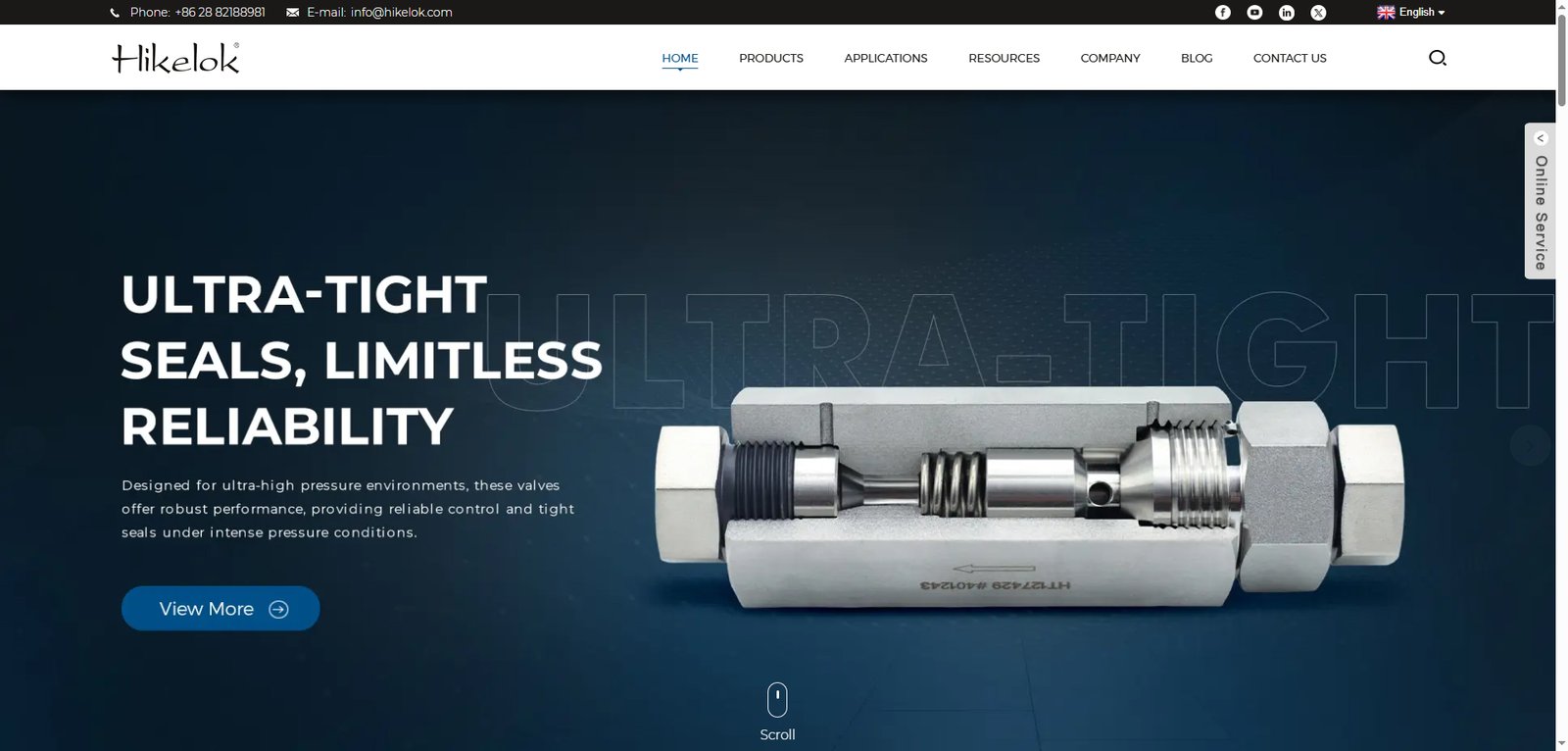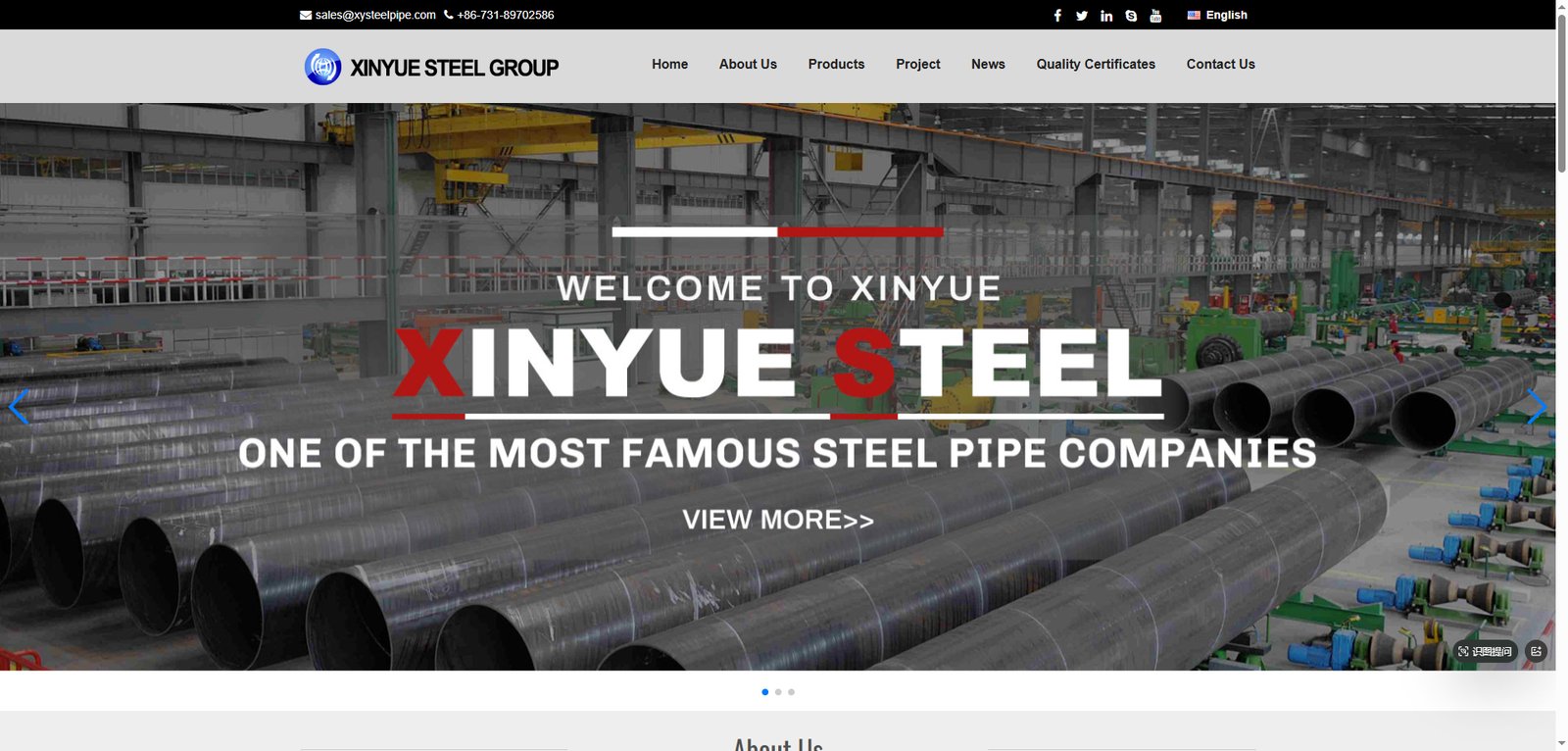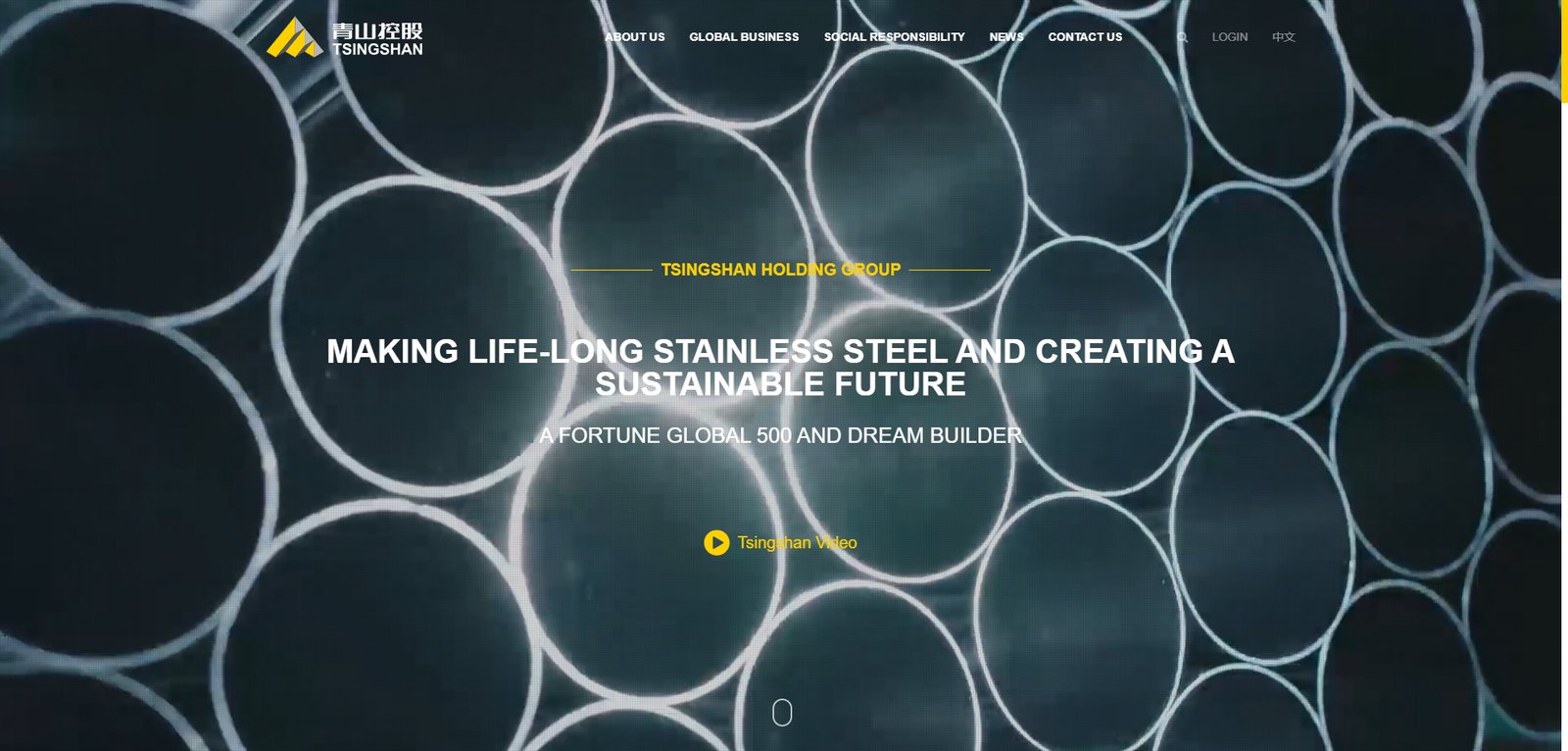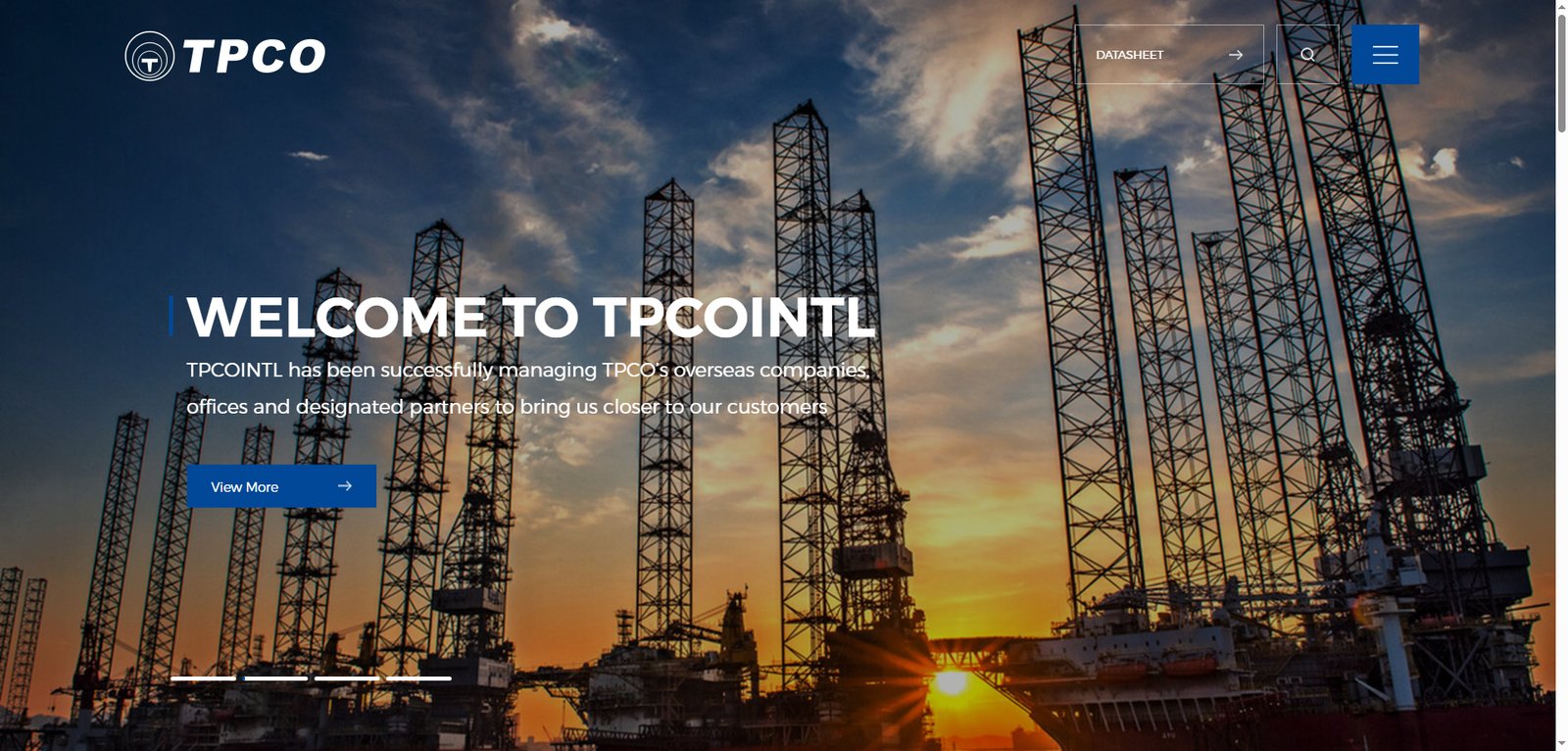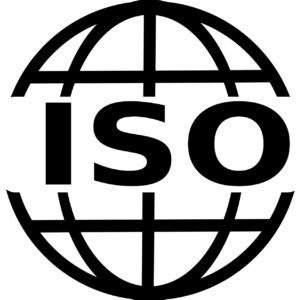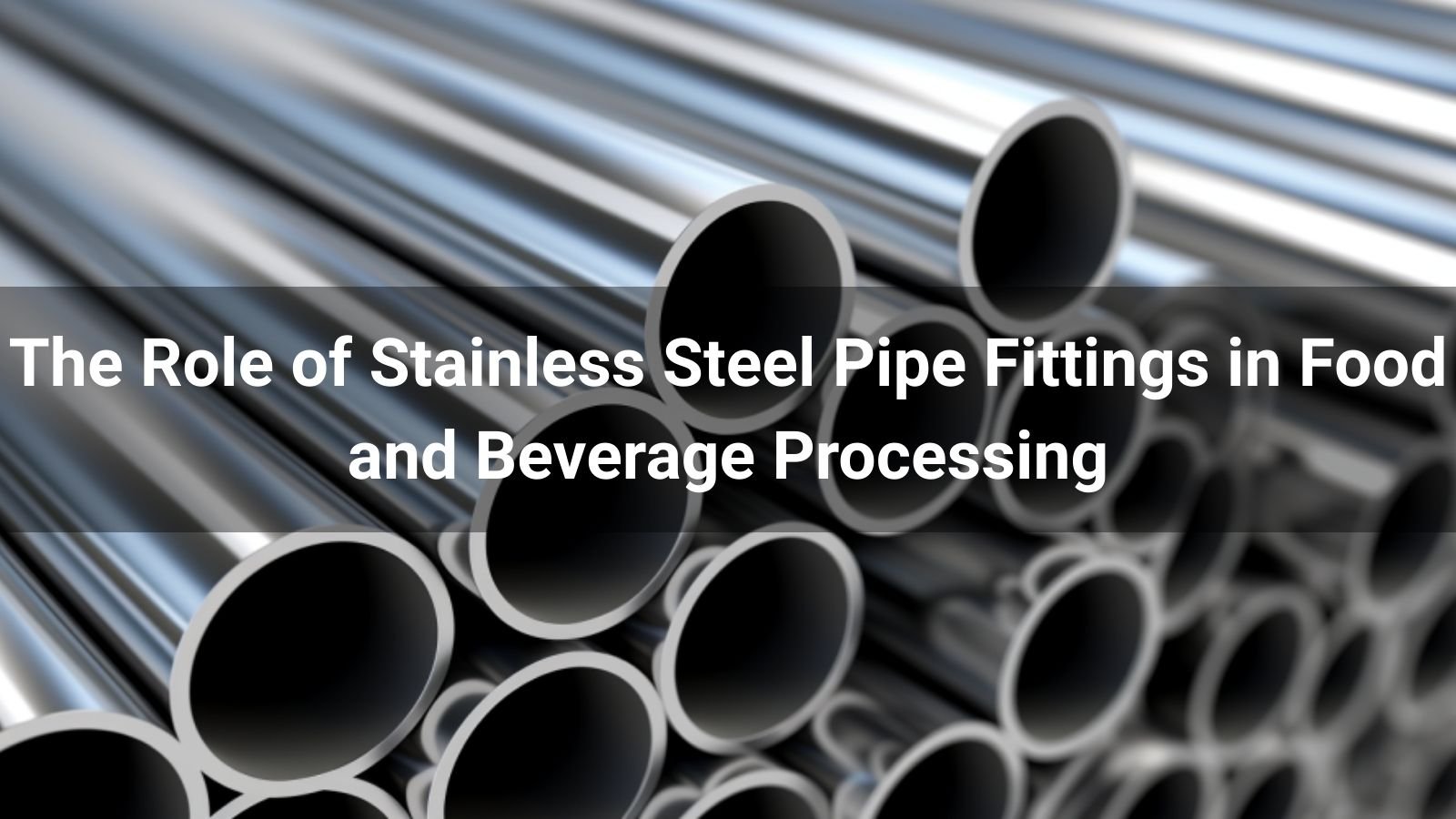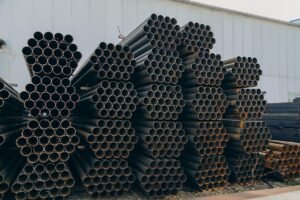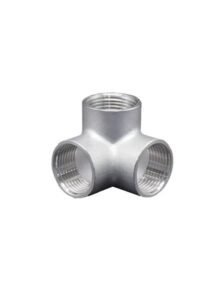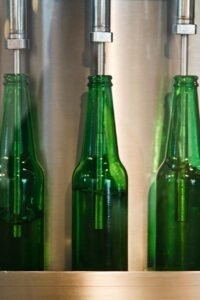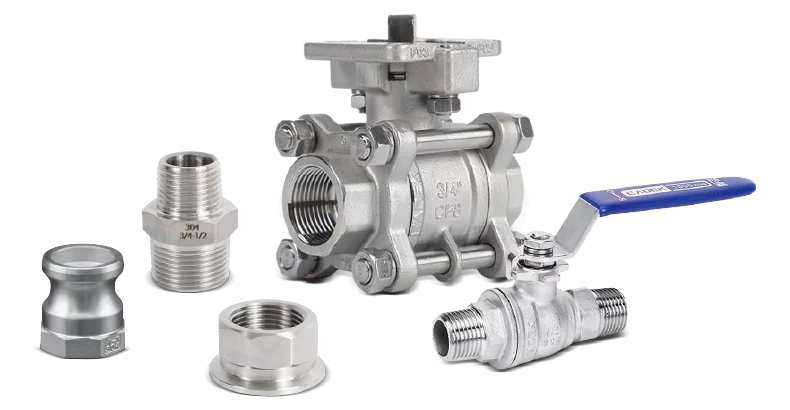Choosing the wrong stainless steel pipe fittings can cost you more than money; it can shut down entire operations. Currently, equipment failures and the subsequent unplanned downtime in Fortune 500 companies leads to a loss of about $1.5 trillion each year. The losses cut across oil, gas, and chemical industries, and in these settings it is often due to poor-quality fittings.
When you’re sourcing stainless steel pipe fittings, getting the right product isn’t just about finding a supplier; it’s about actively ensuring that the materials you receive can perform well under pressure, resist corrosion, and meet your industry’s demands. Whether you work in oil and gas, water treatment, or chemical processing, the stakes are high. A single batch of subpar fittings can cause costly downtime, safety risks, and compliance issues.
In today’s interconnected market, global sourcing opens the door to more options, better pricing, and access to niche expertise. But with so many stainless steel pipe fittings suppliers across different countries, how do you make sure you’re getting consistent, high-grade stainless steel that meets international standards? It takes skill and strategy.
This guide takes you step-by-step through the process of sourcing stainless steel pipe fittings from global suppliers. You’ll learn how to choose between grades like 304 and 316, verify certifications, evaluate quality assurance processes, and manage logistics, so you can secure fittings you trust, no matter where they are made.
Why Quality Matters in Stainless Steel Pipe Fittings
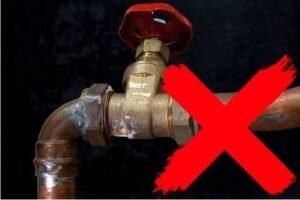
The quality of your stainless steel pipe fittings directly affects how reliable, safe, and efficient the piping system will be. High-grade fittings are exceptionally durable and resistant to corrosion. And these two factors are critical because the component parts will likely be exposed to moisture, chemicals, or extreme temperatures. Stainless steel grades like 304 and 316 stainless steel have different corrosion resistance profiles. For example, stainless steel 316 contains molybdenum for better performance in harsh or marine environments.
High pressure pipe fittings are a safety requirement and not just a preference in oil and gas and chemical processing systems. Inferior stainless steel pipe fittings can fail under pressure, causing system shutdowns, leaks, or even worse accidents. By choosing stainless steel pipe fittings suppliers who enforce strict quality control and testing measures, you reduce the risk of structural failures that could compromise operations.
Adhering to international standards like ISO 9001, ASTM A403, and ASME B16.9 is the closest means to ensure that the fittings meet precise specifications for strength, composition, and performance. These standards are more than just formalities; they provide measurable benchmarks that help guarantee that the products will remain reliable under demanding conditions.
Although high-quality fittings may cost more upfront, they save money over time. You replace them less often, spend less on maintenance, avoid costly downtime, and have less to worry about in terms of product reviews and customer feedback.
Case in Point: In the 1980s, Tokyo began replacing its aging lead and plastic water pipes and fittings with Type 316L stainless steel. By 2018, the city cut water leak rates from 15.4% to 2.2%, saved around 200 million cubic metres of water and about 4 billion US dollars, excluding savings from indirect costs through reduced reservoir development, repair, and maintenance. Repair cases also reduced drastically from 69,000 cases in 1980 to around 10,000 by 2013.
Understanding Types of Stainless Steel Pipe Fittings
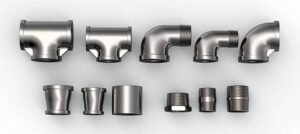
Stainless steel pipe fittings connect, control, and direct the flow of liquids and gases in industrial systems. The right pick doesn’t end at finding a fitting type that matches your pipe size. You also need to assess how the fittings will be used, the environmental conditions, and the performance properties of the materials.
Types of Fittings and When to Use Them
Stainless Steel Elbows
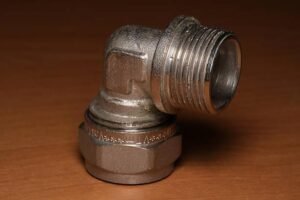
Elbows are flexed, elbow-shaped. They change the direction of flow, by 45°, 90°, or 180°. You use them when there are space constraints, obstacles, or the system design requires a change in piping direction. In oil and gas pipelines, elbows let you route around equipment without reducing flow efficiency.
Stainless Steel Tees
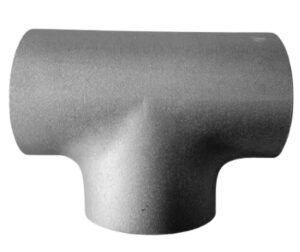
Tees are T-shaped. They split or combine flow in a system. They are common in chemical plants and water treatment facilities where multiple pipelines need to be joined or redirected. There are different variants for different use cases like the forged tee, male thread reducing tee, and union tee. Tee fittings with equal dimensions (straight/equal tees) are used when the branch pipe matches the main pipe size, while reducing tees are used when the branch pipe does not match the main pipe size.
Stainless Steel Reducers
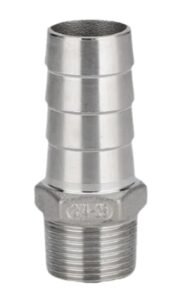
Stainless steel pipe reducers connect pipes of different diameters; one has a smaller diameter while the other is wider. This ensures smooth flow transition and reduces turbulence. Concentric reducers are preferred in vertical piping to maintain symmetry, while eccentric reducers are often used in horizontal runs to prevent pooling of liquids or air pockets. A pagoda joint (a type of metal pipe connector with a stepped or tiered design) can be a reducer fitting to connect hoses of different sizes.
Stainless Steel Couplings

Couplings join two pipes securely, either permanently or temporarily. In offshore oil and gas operations, engineers rely on high-grade stainless steel couplings to prevent leaks under high-pressure and corrosive conditions. The hex bushing M-F (male-female) is a type of reducing coupling where the male end screws into a larger female fitting, while the female end accepts a different smaller fitting, thus reducing the pipe size.
Use Cases by Industry
- Oil & Gas: Engineers make use of high pressure pipe fittings for high pressure systems, harsh offshore environments, and corrosion resistance.
- Water Supply & Treatment: Stainless steel is resistant to rust, hence, it delivers a long service life for potable water systems.
- Chemical Processing: Resistance to chemical corrosion (rust) ensures that the system integrity is protected in aggressive chemical environments.
Common Grades of Stainless Steel: 304 vs. 316
The two most common stainless steel grades for pipe fittings are 304 and 316. Although they are both durable and resistant to rust, 316 contains molybdenum, which gives it higher resistance to chloride and saline environments, making it a preferred option for marine and chemical applications.
| Property | 304 Stainless Steel | 316 Stainless Steel |
| Strength | High | High |
| Corrosion Resistance | Excellent in most environments | Superior in chloride/marine environments |
| Cost | Lower | Higher due to molybdenum content |
Plain Stainless Steel Fittings vs. Alloys
Plain stainless steel fittings (made solely from 304 or 316) work well in many general-purpose applications. However, in industries with extreme conditions, like high temperatures, abrasive media, or strong acids, stainless steel alloys (e.g., duplex or super duplex) may provide extra strength, heat tolerance, and corrosion resistance. While these alloys cost more, they often reduce maintenance needs and extend service life significantly.
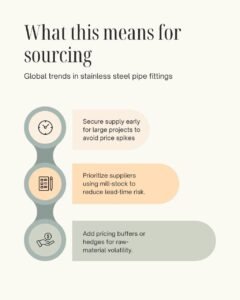
Global Market and Supply Chain Trends 2025
Going into 2025, the demand for stainless-steel pipes and fittings was steady and showed low-single-digit growth. Currently, the market reports for 2025 place the stainless-steel pipes market at $36-38 billion. While at this figure, the plumbing-fittings and general plumbing segments are also expanding, driven by energy, construction, and infrastructure projects.
Suppliers are shifting how they fulfil orders. More European distributors now rely on mill-stock inventories for faster turnarounds rather than fully custom production. This approach shortens lead times and smooths order flow. Raw-material price fluctuations are now the main sourcing risk. Nickel and chromium prices, plus the larger geopolitical trade measures (like tariffs and uneven trade policies), all keep stainless-steel costs and availability unstable. Hence, you can expect procurement budgets to feel intermittent shocks.
How to Identify a Trustworthy Stainless Steel Pipe Fittings Supplier When Sourcing Globally
If you source stainless steel pipe fittings globally, you need suppliers you can trust. To ensure you get the best deals on your products and of the top quality, here are some key checks to use:
A. Product Quality Checks
- Material Quality and Traceability:A reputable stainless steel pipe fittings supplier will provide detailed Mill/Material Test Reports (MTRs) that confirm the grade of stainless steel, chemical composition, and manufacturing process. These reports allow you to trace raw materials back to their origin and ensure the fittings match the required specifications. Some pipe fitting distributors have digital records, so you can easily verify or present them for audits.
- Supplier Certifications:Ask for certifications like ISO 9001 (quality management systems) and for standards or markings relevant to your market. For pressure-pipe fittings, ask about conformity to ASTM A403 (wrought austenitic stainless steel fittings) and ASME B16.9 (butt-weld fittings) where applicable. CE marking or other regional approvals may apply to products sold in the EU.
- In-house and Third-party Testing:Whether it is in-house or through accredited third-party laboratories, reliable stainless steel pipe fittings manufacturers pass their high-grade pipe fittings through hydrostatic pressure tests, dimensional checks, and corrosion resistance tests. You can also ask to see these results as part of your due diligence or to confirm the testing lab’s accreditation for global acceptability.
B. Where & How to Source Globally
You can source stainless steel fittings internationally through several channels:
- Direct Manufacturer Websites: Buying direct often gives better control over product specifications, tooling, and bulk pricing. Check the factory profile, capability statements, and photo/video evidence of production lines. This is ideal for bulk purchases and custom manufacturing.
- B2B Sourcing Platforms: Platforms like Alibaba, Global Sources, and Made-in-China allow you to find stainless steel pipe fittings suppliers and to filter by “verified” or third-party inspected vendors. These platforms also host inspection reports and supplier credentials you can download.
- Industry Trade Shows & Networking: Attend trade events such as Tube Düsseldorf or the Stainless Steel World Conference & Expo to inspect products in person and meet the pipe fitting distributors directly. This way you can inspect the products in person, negotiate face-to-face, and build stronger business relationships.
- Procurement Agents or Wholesalers: These professionals manage supplier relationships, negotiate pricing, and handle quality inspections on your behalf. They often have existing networks of trusted stainless steel pipe fittings manufacturers, which can save you considerable time and risk.
C. Vetting and Ordering from Suppliers
Once you have a shortlist of potential stainless steel pipe fittings suppliers:
- Supplier Evaluation: Start evaluating them through references from previous clients, online reviews, and their responsiveness to your inquiries.
- MOQ, Lead Times, and Logistics: Ensure their minimum order quantity (MOQ) fits your needs and confirm their production timelines. Ask about global shipping options, preferred freight forwarders, and their experience with customs documentation.
- Global Reach and Compliance: A reliable supplier understands import regulations in your target market and can provide all necessary paperwork (such as mill test certificates, certificates of origin, and compliance declarations) to avoid customs delays.
- Pricing Transparency: Beware of unusually low prices, which may indicate inferior materials. A good wholesale pipe fittings supplier offers a fair market rate with a clear breakdown of costs, including freight, taxes, and duties. Overall, the goal is not just to find the cheapest stainless steel pipe fittings supplier, but one that consistently delivers on quality, timelines, and compliance.
Common Red Flags in Sourcing Stainless Steel Pipe Fittings

When sourcing stainless steel pipe fittings, certain warning signs can indicate potential problems down the line. Spotting these early can save you the trouble.
- One of the clearest red flags is unrealistic pricing. If a supplier offers prices far below market value, it may be an indicator that they are using substandard materials or hidden compromises in manufacturing. While everyone loves a good deal, unusually low costs in this industry often come at the expense of durability and compliance with standards.
- Another issue to watch for is poor communication or frequent delays. Reliable wholesale pipe fittings suppliers are prompt and professional in their communication and meet agreed timelines. Long gaps in response or vague answers to questions may point to disorganization or a lack of transparency.
- You should also be cautious if there’s a lack of technical documentation. Quality fittings should come with clear specifications, test reports, and relevant certifications. Missing or incomplete paperwork can suggest non-compliance with ISO, ASTM, or ASME standards.
- Lastly, be wary of inconsistent product labeling or packaging. Mismatched labels, spelling errors, or inconsistent markings could indicate poor quality control or, worse, counterfeit products.
Conclusion
In the stainless steel pipe fittings market, choosing quality over price is an investment in long-term reliability, safety, and performance. While it may be tempting to cut costs upfront, low-grade fittings can lead to equipment failures, which will then result in costly repairs, supply delays, and even safety hazards. High-quality fittings, on the other hand, are durable, better resistant to corrosion, and comply with industry standards. This way your systems and business runs smoothly for years.
Working with certified, reliable pipe fitting distributors means you gain more than just a product; you gain a partner who values transparency, timely delivery, and consistent quality. Proper documentation, clear communication, and strict quality control are non-negotiables when your project’s success is on the line. By spotting red flags early, you protect your investment and ensure that the fittings you purchase meet your project’s safety, quality, and regulatory needs.
For your next project, consider Camlock’s stainless steel fittings. We have proven expertise in the industry, adher to global standards, and are committed to excellence. Simply put, we provide the performance and peace of mind you need to get the job done right.
FAQ
What is the minimum order quantity for most global suppliers?
Minimum order quantities (MOQs) for stainless steel pipe fittings vary widely, however, many suppliers set them between 100-500 pieces. Some large manufacturers may require even higher volumes to make production cost-effective. If you’re testing a new supplier or product, it’s worth asking if they can accommodate smaller trial orders; many are open to negotiation, especially if they see a long-term business potential.
How can I negotiate better pricing for bulk stainless steel fittings?
Negotiation often works best when there’s mutual trust. Start by getting quotes from multiple suppliers so you know the market range, then discuss realistic volumes and timelines. Building rapport and showing that you’re a serious, long-term customer often opens the door to better deals.
What’s the average lead time for overseas shipments?
On average, overseas shipments of stainless steel fittings take 4-8 weeks, factoring in production, quality checks, and transit. Lead times can stretch longer during peak manufacturing seasons or if there are port delays. If your project is time-sensitive, it’s smart to confirm lead times upfront and build in a buffer. But note that rushing production or shipping almost always drives up costs.
Can I order in small quantities from global suppliers?
Yes, but with trade-offs. Many suppliers are willing to sell smaller quantities, especially if you cover the higher per-unit costs or pay for setup charges. Some offer “sample orders” as a way to test product quality before committing to a bulk purchase. This can be an excellent option if you’re entering a new market or trying out a specific fitting type.
How do I arrange third-party quality inspections before shipping?
You can hire an independent inspection company to visit the supplier’s facility and check everything from product quality to labeling and packaging. Some buyers even arrange staged inspections during production to catch issues early, not just after manufacturing is complete.
